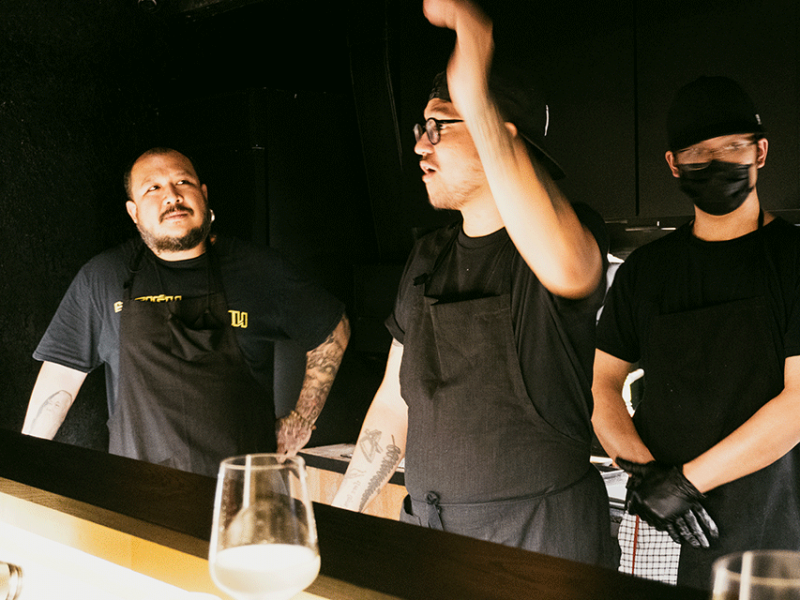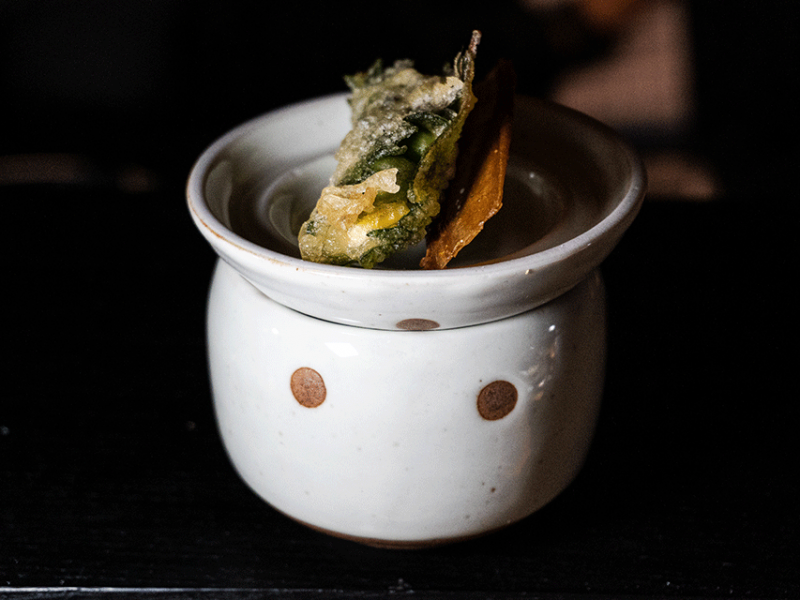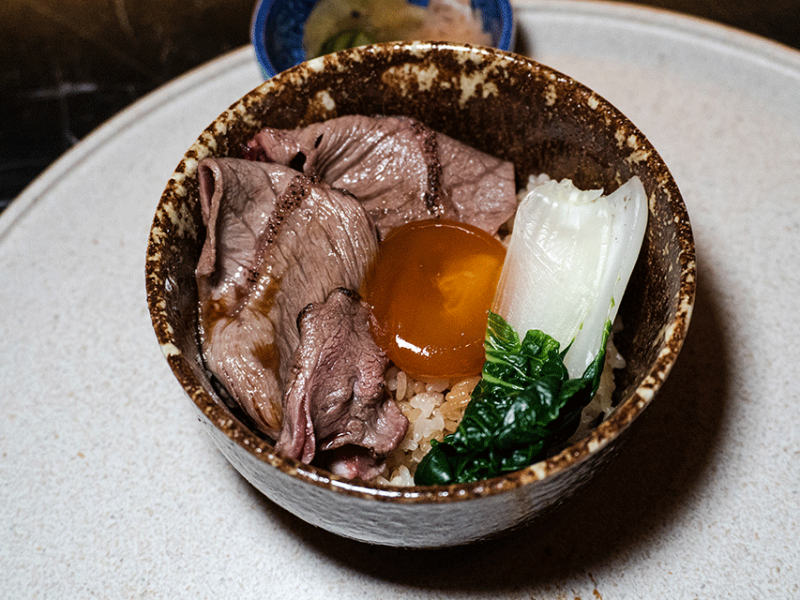“When you swap the letters of Denmark’s 3-star Michelin Noma, you get Namo,” says chef Chalermpon “Van” Rohitratana (Rarb and DAG), explaining the name of their new pop-up. Leaving aside their little joke, he and Phanuphon “Black” Bulsuwan (Chiang Mai’s Blackitch Artisan Kitchen) are serious contenders on Thailand’s food scene.
The two have been at the forefront of the industry in introducing unsung local ingredients and sustainable produce from remote farmers into a larger spotlight. But they admit they are reconsidering their approach.
Chalermpon “Van” Rohitratana (on the left); Phanuphon “Black” Bulsuwan (on the right). Photo: Porpor Leelasestaporn / BK Magazine.
“For 6 to 7 years we have been placing an emphasis on local ingredients and strictly using them in our food. But if we really want to push them further, we have to take advantage of their knowledge on the already familiar imported ingredients,” Black says, expounding on the concept behind this pop-up.
Inside a tiny black space borrowed from Piman 49’s pub Tipsy Tuesday, the heart of the menu (B3,600 for 12 courses) lies within blending regional ingredients and elevating them on par with imported ingredients and modern techniques.
Open-faced sandwich and panipuri. Photo: Porpor Leelasestaporn / BK Magazine.
The first course arrives as an open-faced sandwich featuring pickled kohada fish and Iberico ham. The bell pepper sauce and passionfruit provide a great buffer to the dish, followed by hints of sweet sake in the aftertaste. Another fun craft was Japanese panipuri, a crisp fried sphere filled with larb-spiced chutoro and a liquid blend of tamarind and Japanese scallion—a nod to a collective craze for online Indian street food videos.
Next is Japanese sashimi, but there’s a catch: none of the ingredients are from Japan, even the wasabi.
“People normally back down when you serve them Thai fish sashimi,” Black tells BK about the fear of raw fish from the local water due to the difference in ocean temperatures.
A giant trevally from Surat Thani. Photo: Porpor Leelasestaporn / BK Magazine.
Instead, they sourced a giant trevally from Surat Thani where fishers learn to prepare their newly-caught fish with shinkeijime and ikeijime methods and make their own version of wasabi with a blend of Chinese lettuce and mustard oil.
With precise incisions, the fish melts at first touch while the ‘fake’ wasabi gives off more subtle and gentle heat than its ‘real’ counterpart.
“Some of our earlier customers believed that they were eating the real blue fins,” he says.
Sweet corn tempura. Photo: Porpor Leelasestaporn / BK Magazine.
Another heavily Japanese influenced dish is the sweet corn tempura served with crispy golden chicken skin paired with chestnut cream blended with sea urchin and organic chicken liver. The parade of sweetness from chestnut and fried deep corn is cushioned by the chicken stock soup and salmon roe eggs. The smoked duck, meanwhile, is sou vide and air-dried at 58 celsius for three days, served alongside curry baba ganoush and Vietnamese pineapple chutney while the crispy papadum offers a satisfying crunch
Fried fish miang. Photo: Porpor Leelasestaporn / BK Magazine.
The calling card of the day was Korean-style miang pla bu (a traditional one-bite vegetable wrap with Thai gouby). It was irresistibly crispy on the outside and gave off an explosive oomp in the first bite. When wrapped with Japanese rocket leaves and Korean red chili paste, the fresh was extraordinarily moist and perfectly balanced.
For the main course, Namo’s baked rice has more nuance than it first appears. The menu is inspired from two episodes of Netflix’s Midnight Diner, with the duo adapting their own version of baked butter rice.
Namo's butter baked rice. Photo: Porpor Leelasestaporn / BK Magazine.
“The rice cooker we use for the dish is really a rare find; only two restaurants in Bangkok [Filets and Namo] use it,” Black claims. The steamed melting butter rice was topped with chuck-eye Himawari beef, marinated egg yolk, and bok choy. Inside tip: When you run out of meat, enjoy the leftover rice with the ochazuke-style chicken stock.
French almond cake with tangy kamquat jam. Photo: Porpor Leelasestaporn / BK Magazine.
The course ends with two desserts: burnt butter ice cream with warabi mochi with kinako powder and French almond cake financier flavored with tangy kumquat jam and served with Calamansi black tea.
Despite a Japanese core to their cuisine, Namo is expanding our taste borders. It redefines and broadens the scope of food that doesn’t focus only on high-end ingredients from haute culinary trends.
Namo serves two rounds per day at 6pm and 8.30pm and will operate until November, 2022 before closing.
Namo. Piman 49, Sukhumvit Soi 49. Line @namo.bkk






